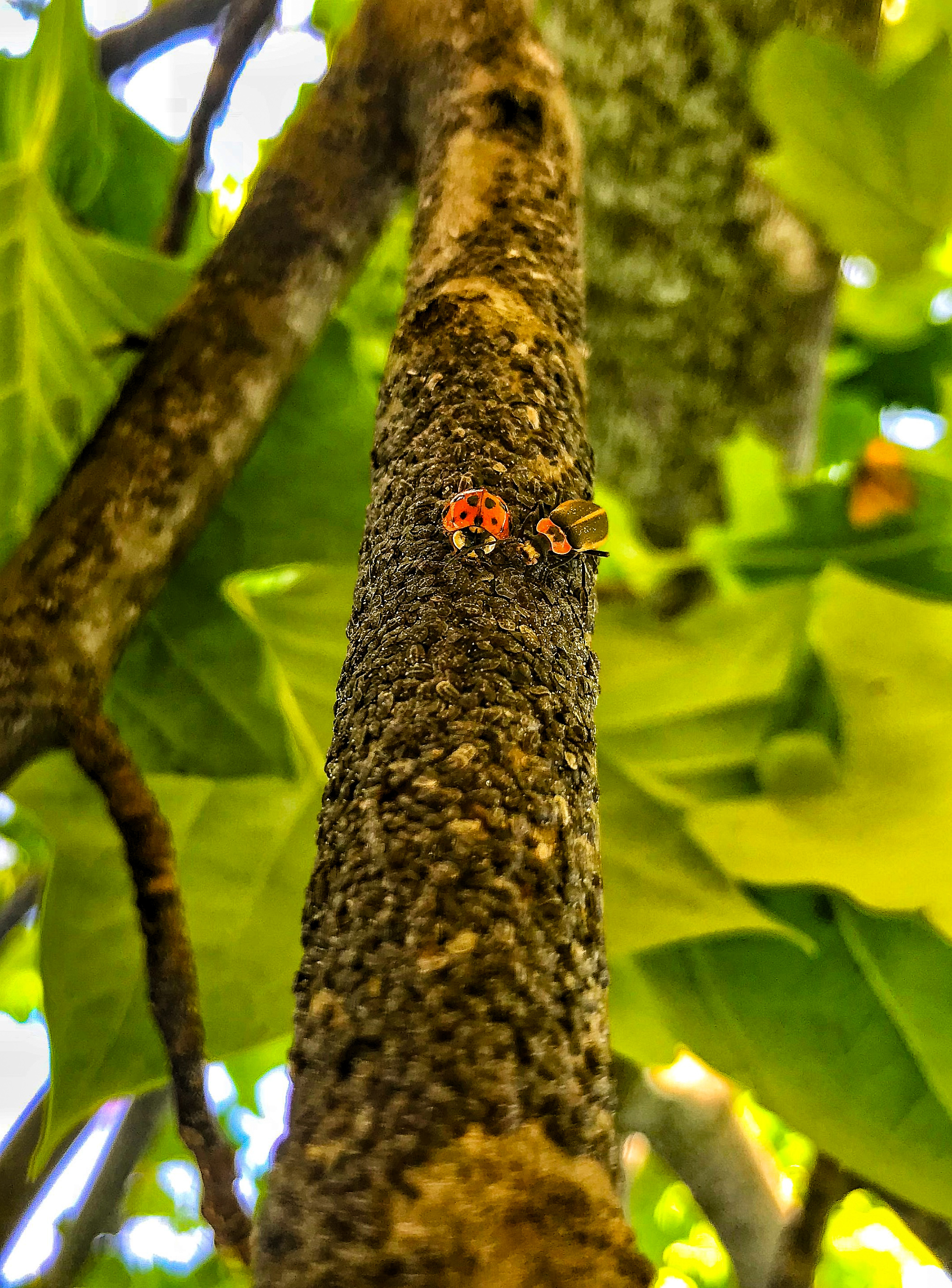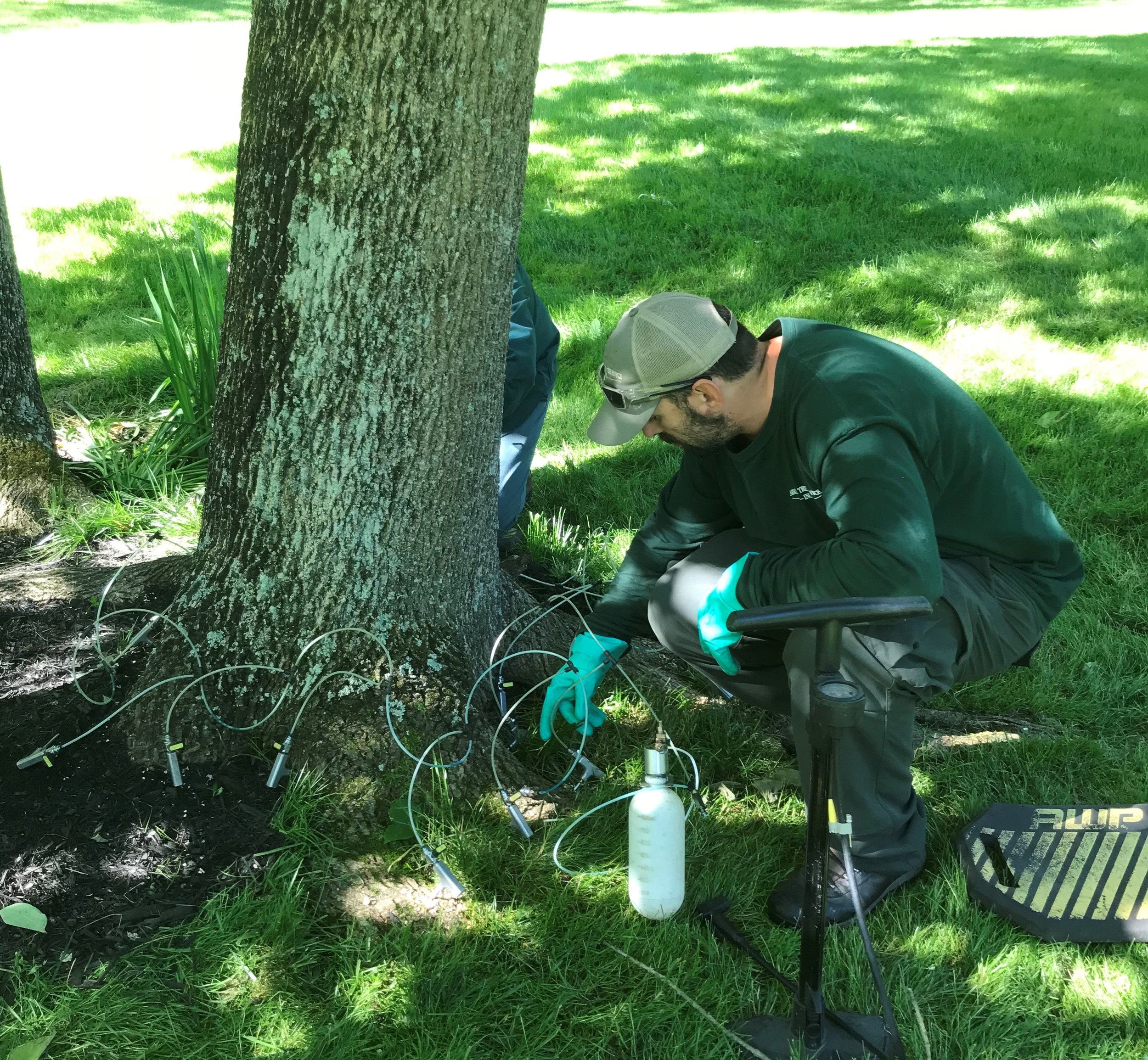Plant Health Care
The control of harmful pests is a significant part of tree care, and some pests may require immediate attention. Gypsy moth, for example, can completely defoliate a tree in one season! At Carroll Tree Service, we can identify problems, and if treatment is necessary, determine the best method of control.
Harmful insects are commonly found on, under, or inside of leaves, twigs or bark. Obvious signs include chewed or damaged leaves, leaves with tunnels or mines, and holes in the bark of the tree. However, depending on the insect, it can be difficult for some homeowners to see activity. Some tree diseases may cause death immediately and others can ruin a tree's aesthetic appeal or weaken it to a point where the tree becomes vulnerable to environmental stresses.
In general, timing is critical for treatments to be effective because all insects have unique life cycles!
If you have a tree that does not look well, if you notice unusual insects, or if you just have a tree that is especially important to you, it may be appropriate for an Arborist to give an assessment of your tree’s health.
For more information on insects and diseases on trees and shrubs visit the University of Maryland Cooperative Extension Home & Garden Information Center.
Integrated Pest
Management (IPM)
Monitoring
Our trained plant health care technicians will inspect your landscape for damaging mite, insect and disease pests. Treatments will be made as needed to keep these pests below harmful thresholds. This approach allows us to minimize pesticide use on your property and maintain a healthy ecological balance.
Horticultural Oil Spray
The use of horticultural oil is an integral part of our IPM program. Treating your ornamental plants with this environmentally safe material aids in the prevention of damaging pest populations. Applications are typically timed in the spring or fall to maximize effectiveness.
Systemic Insecticide Treatments
Another component of our IPM program is the use of systemic insecticides. By injecting or drenching a small amount of these materials at the base of key landscape plants we can prevent insect problems for an entire season while avoiding issues associated with traditional pesticide applications.
Target Sprays
Suppression of certain landscape pests, such as bagworm or wood boring insects, require the application of a pesticide spray with the correct timing. Our technicians are trained to treat these hard to control pests while using the safest pesticides and application methods available.
Disease Control
Foliar spray
Foliar diseases, such as anthracnose on native dogwoods, need to be treated preventively. These treatments require three to four sprays at roughly two-week intervals to provide disease suppression.
Dutch Elm Disease
This disease has wiped out most American elm trees throughout the United States. Preventive fungicide injections directly into the trunk of the tree, along with adequate cultural practices such as removing deadwood are the best ways to keep your elm trees disease free. Click here for more information on Dutch Elm Disease.
Ash tree decline before and after Emerald Ash Borer infestation, Toledo, OH 2006 - 2009 (Credit: Dan Herms, OSU)
Emerald Ash Borer
(EAB)
VP, Sam Mays identifying EAB larvae infestation
EAB is an invasive beetle from Asia which first appeared in the United States in 2002. Since EAB's initial discovery in the Detroit area, it has spread to 30 states and two Canadian provinces. EAB is 100% fatal to untreated native ash trees. Mortality typically occurs within four years of initial infestation due to EAB larvae tunneling beneath the bark. Tens of millions of ash trees in Midwestern and eastern states have already succumbed to this devastating pest.
In Maryland, EAB was first discovered in Prince Georges County in 2003. It has now spread throughout much of the state and has infested ash trees in nine counties including Howard, Anne Arundel, Montgomery, and Calvert. In 2011, a new EAB infestation was identified in Columbia, MD. As of June 2015, EAB has been detected in Carroll, Baltimore, Harford counties and Baltimore City along with several eastern shore counties.
Please contact us via phone or email to learn more about how we can help protect your ash trees. You may also refer to the Emerald Ash Borer information website or the University of Maryland Extension website for more information.
Plant Growth
Regulator
Many landscape and street trees are adversely affected by limited root space and drought stress. The application of plant growth regulators (PGRs) will help alleviate these issues by increasing fine root growth and leaf thickness. One treatment lasts up to three years. PGRs are also known to suppress symptoms of bacterial leaf scorch and chlorosis. Click here for more information on PGRs.
Winter Deer Repellant
We use the strongest deterrent available to protect your woody ornamentals from deer feeding. One to two applications will last from fall through spring. Click here for more information on deer repellant.
Anti-Desiccant Spray
Winter damage is common among broadleaf evergreens, especially those with frequent exposure to windy conditions. Treating your susceptible ornamental plants with an anti-desiccant will help maintain their health and beauty throughout the long winter.
Find out more information about the products used by Carroll Tree Service Integrated Pest Management technicians here.









